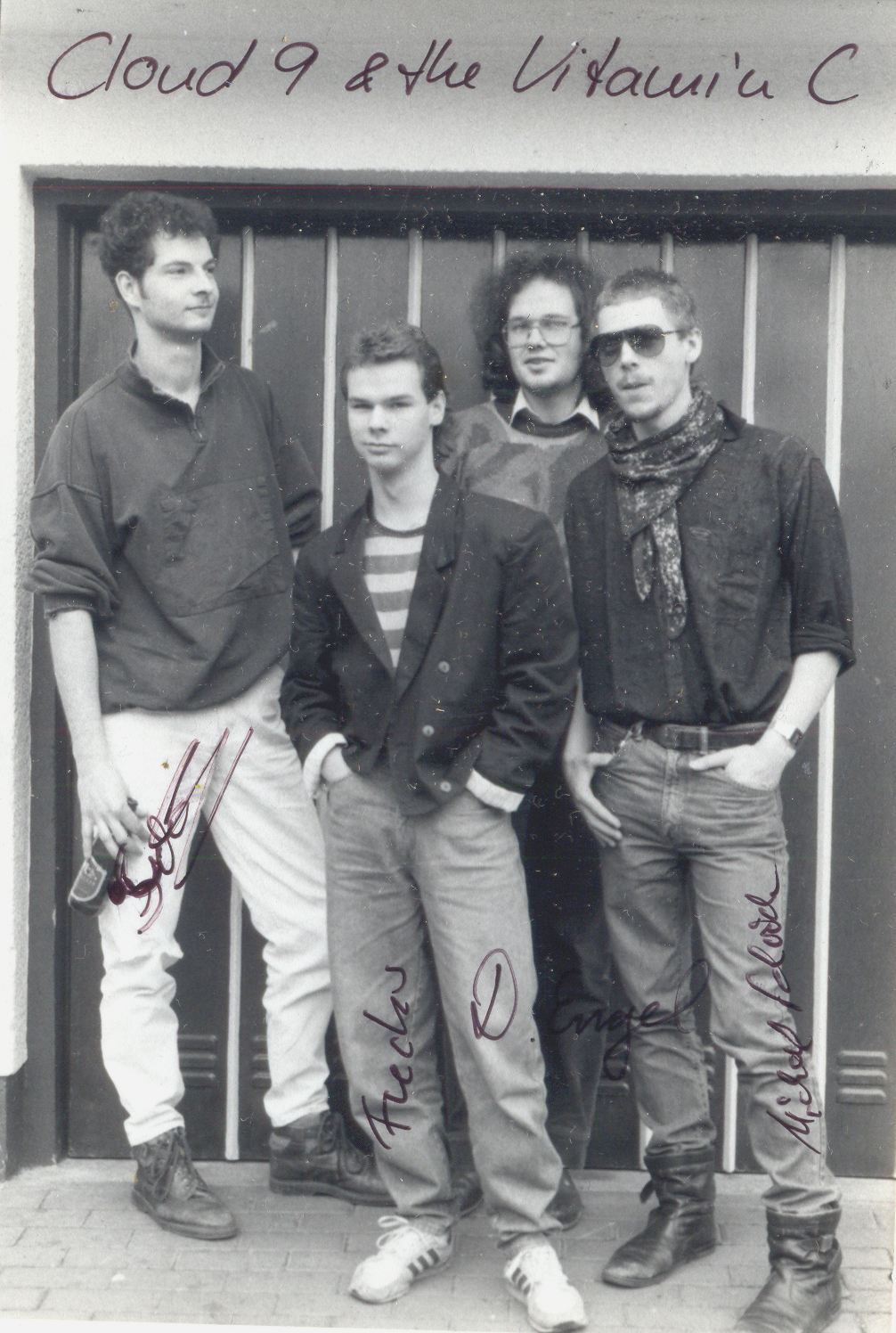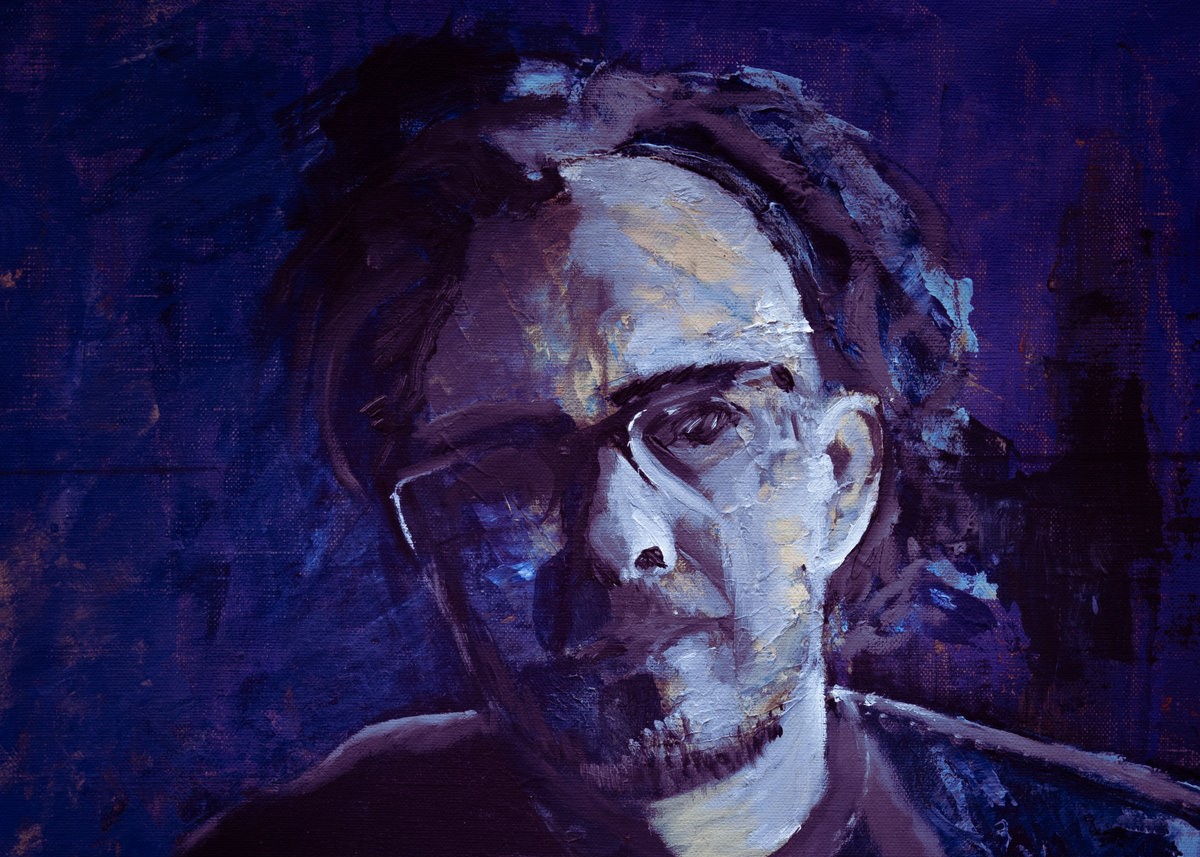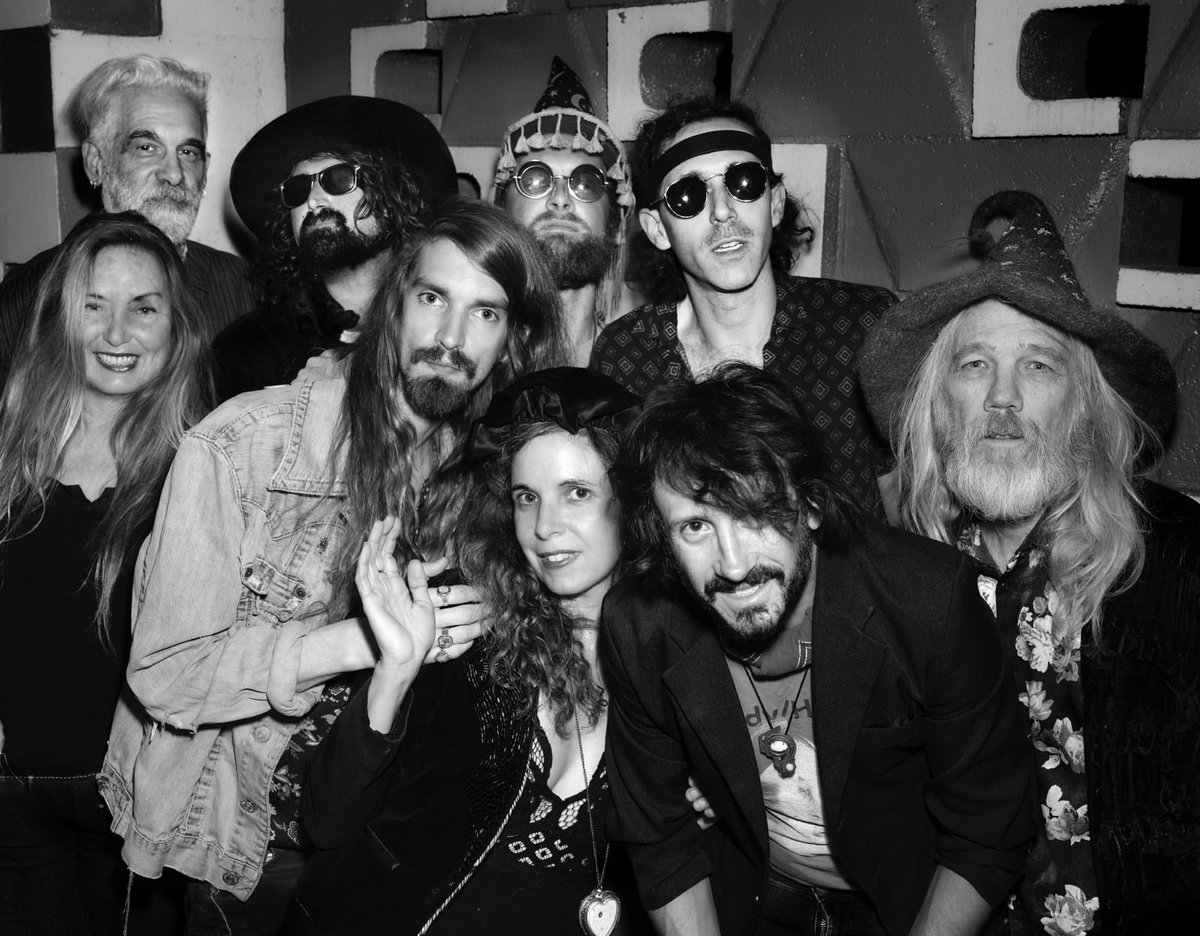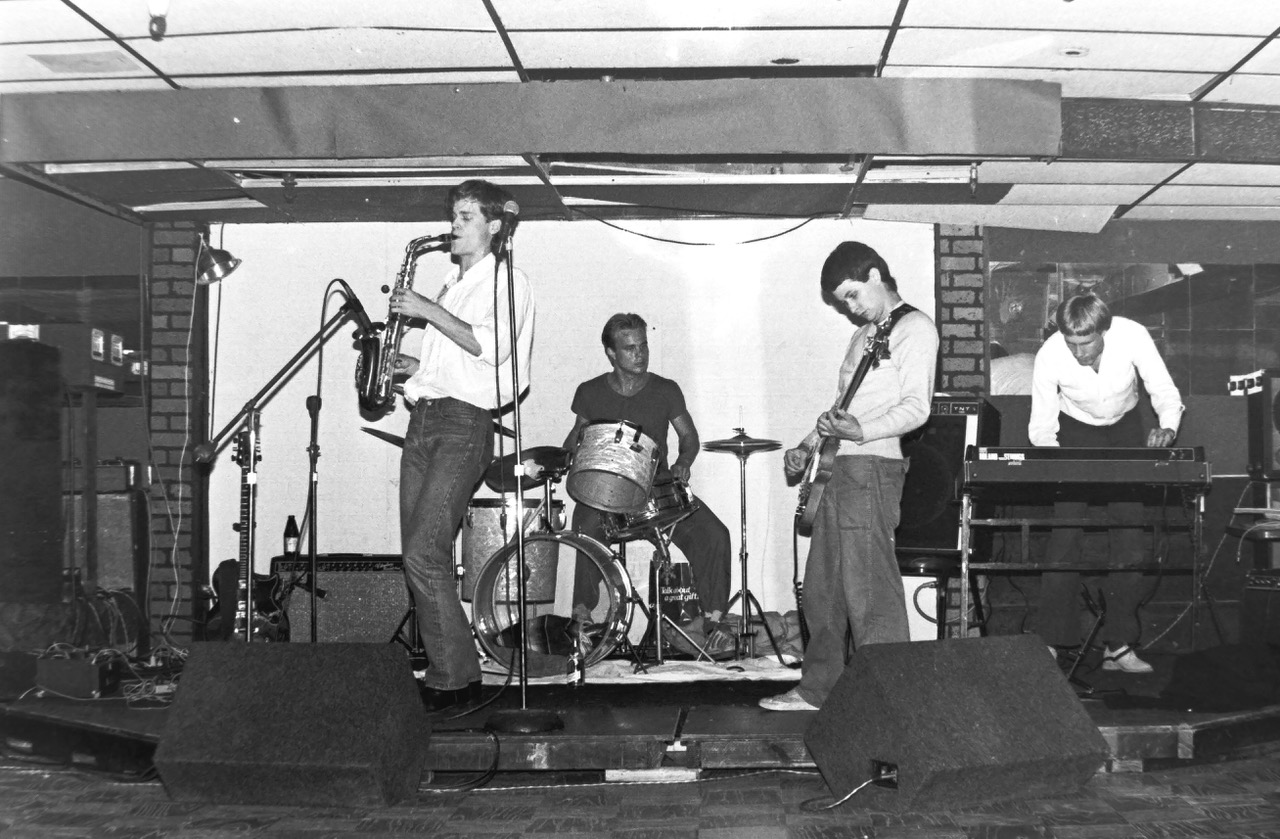Cloud Nine & The Vitamin C | Interview | “Draw Down The Distance”
Cloud Nine & The Vitamin C were a psychedelic rock band from Germany active from 1983 to 1992. Starting as a school band they went through different line-ups, released a handful of cassettes and broke up during the recording of what should have become their first album in 1992.
The tracks on ‘Draw Down The Distance’ feature the unreleased album. Cloud Nine & The Vitamin C existed for about nine years in various line-ups, always centered around keyboard player and singer Dominik Engel and bassist and vocalist Mike Schröder aka Mike Floyd. There were several guitarists as well as the drummers being part of the band. Engel and Schröder wrote most of the songs, with the exception of a couple of tracks written by their last guitar player and singer Pete Hergo. The songs from 1990 were recorded with very crude equipment in a basement on four-track tape. The songs recorded in 1992 were recorded in a semi-professional studio but sadly the band broke up and all they got in the end was a rough mix. The master tapes were lost or destroyed and so the rough mix was all they had to work with. Those tracks were recut and partly reworked by Schröder and later remastered by a guy called Alain, who lives in London.
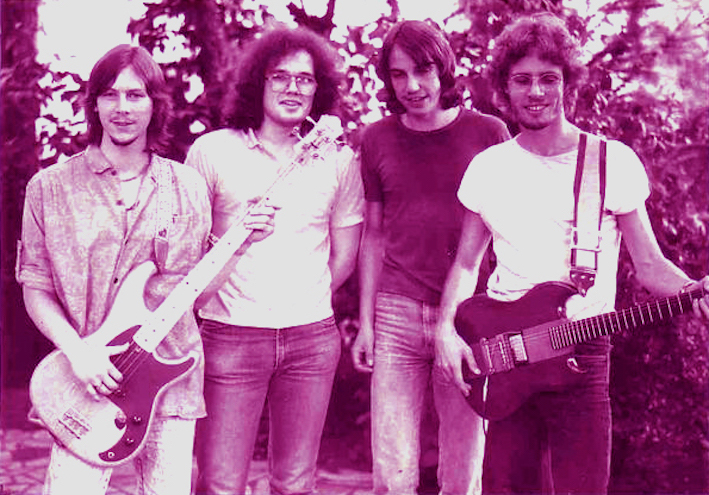
“There were no big discussions about how our music should sound”
Would you like to share about your upbringing? Where did you all grow up? Tell us about daily life back in your teenage years.
Mike Schröder aka Mike Floyd: I grew up in Laudenbach, a small town in Baden-Württemberg in the so-called Rhine-Neckar district, not too far from Heidelberg, Mannheim and Darmstadt. When I was ten, my family moved to Lorsch (Hessen). Dominik (later keyboardist and singer in Cloud Nine & The Vitamin C) and Björn, who played saxophone on some of Cloud Nine & The Vitamin C’s songs in the early days, also lived here. All three of us went to the same school (Starkenburg-Gymnasium) in the neighboring town of Heppenheim and took the same school bus there. We didn’t have too much to do with each other at first, but at some point I became friends with Björn. I only had more contact with Dominik years later, when he found out that a band was forming that he wanted to join. Lorsch was a pretty boring little town, known for its monastery (founded in the year 764); there wasn’t even a cinema or a youth center. If you wanted to do something as a teenager, you had to drive to one of the larger neighboring towns – Mannheim, Darmstadt or Heidelberg. Most of the time, though, we just hung out at our friends’ parent’s houses in our free time, chatting, listening to music and playing poker. Especially we hung out a lot at Christof’s place, the guy who later did the lightshow for Cloud Nine & The Vitamin C.
Dominik Engel: My parents moved to Lorsch when I was three or four. In kindergarten I was a bit of a problem child, so my parents were told to let me do a test in order to get me to primary school (means “out of kindergarten”) as soon as possible. I spent most of that time playing football on the streets and started to play chess at that time too, and at the end of primary school my parents thought it would be better, if I go to a grammar school, where none of my classmates would go, so I ended up at the Starkenburg-Gymnasium. As school was always easy for me I spent most of my time listening to music and later on hanging out with friends listening to music and playing cards.
Was there a certain scene you were part of, maybe you had some favourite hangout places? Did you attend a lot of gigs back then?
Mike: There wasn’t really a music scene worth mentioning in Lorsch, Heppenheim and the surrounding area in the mid and late 1980s. There were one or two amateur bands, but nothing exciting. The best known were Dschinn Fizz (from Heppenheim), a hard rock band in the style of The Scorpions a little before our time, who released a record in 1981 but quickly disappeared again without any success worth mentioning. Later they reformed. Then there was the regionally successful Rolling Stones cover band Starfucker and a funk band called Waste the Taste. The last successful band to come from the area was the psychedelic/prog band Nektar in the early seventies, who lived near Darmstadt in a place called Seeheim – before moving to New York after the success of ‘Remember the Future’. But in the eighties, Nektar had been completely forgotten here (except by a few music geeks like us). For bigger concerts you had to go to Mannheim or Frankfurt. I saw my first big rock concert in Mannheim in 1982: the Krautrock/prog band Eloy from Hanover. A little later, Zappa, David Gilmour (solo), Deep Purple, Roger Chapman, Genesis, Pink Floyd, John Cale. And in Frankfurt Yes, Grateful Dead, Iron Butterfly and so on. You could also see some cool bands in Heidelberg in a club called Schwimmbad. There I saw Embryo, Moe Tucker with her band and probably Guru Guru, although thinking about it, that may have been later at some festival.
Dominik: I do not know if there was some kind of scene in Lorsch, at least there was none I fitted in. From an early age on I never understood other people’s mostly illogical behaviour starting with my family, especially my father, but I also learned quickly it was way more convenient, not to let them know or question this! I was playing football for some time because all of the boys in our street did, but not for long, and I started playing chess when I was about five. Chess is cool as you are not dependent on other people, apart from the team matches. I played more gigs with bands myself at that time than I attended. I never liked to be in great masses. One of my first concerts was the Grateful Dead, when they came to Germany.
When did you begin playing music? What was your first instrument? Who were your major influences?
Mike: I must have been about 10 years old when I asked my parents for an acoustic guitar and got one for Christmas. I had guitar lessons for a year or two, but I only learned “classical” guitar (from sheet music). But I soon lost interest. I would have preferred to learn some songs by Bob Dylan or The Beatles, but there was no guitar teacher for that in our small town. When Cloud Nine started, I soon switched to bass, as it was clear that Peter Schupp was the better guitarist. The major influences? That’s easy: In the beginning, mainly Pink Floyd (my older sister asked me to buy ‘Wish You Were Here’ for her as a birthday present and I first listened to it on headphones and was immediately hooked. I gradually bought everything that was available from Pink Floyd in 1978. And in second place, The Doors, after seeing ‘The Doors Are Open’ (the film about their London Roundhouse performance in 1968) on TV. The Woodstock movie also made a big impression on me. I must have seen it in 1979. Then it started listening to all that Sixties psychedelic stuff (Iron Butterfly, Jefferson Airplane, Quicksilver Messenger Service, Vanilla Fudge, The Electric Prunes…). Dominik then introduced me to psychedelic soul (The Temptations) and the more unknown garage/punk bands from the original ‘Nuggets’ sampler, which opened a new door for me.
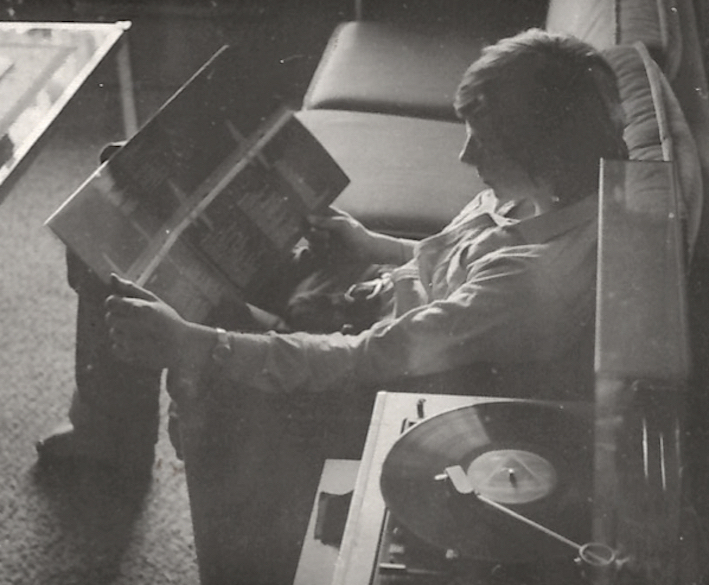
Dominik: My mother was really good at the piano and we had one at home, so me and my brother liked to gamble at it until it was: “Learn to play it right or stop that noise!” So we both took piano lessons, which was not half as funny. But at least I was allowed to still play on the piano and so I learned quite a bit about harmonies by trying to copy chord progressions from songs I heard on the radio. Other bits I learned from some kind of disillusioned music teacher at the Starkenburg-Gymnasium who told us nothing but tonic, subdominant and dominant for years. In those years I learned that there is also some kind of logic in music, which helped a lot later on. My earliest musical influence was Frank Laufenberg, a radio DJ, who played “Oldies,” which meant songs that were already 10 years old then (and “then” means the late 70s). This was where I first heard The Doors, Jimi Hendrix, Julie Driscoll and the Brian Auger Trinity, but also garage rock classics like ‘Time Won’t Let Me’ and ‘Liar, Liar’.
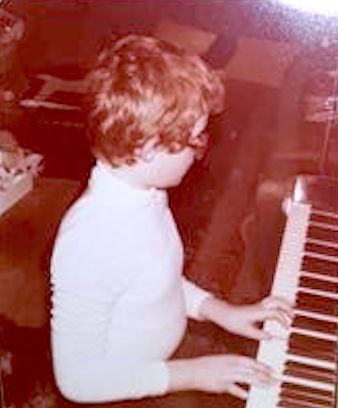
If we would step into your teenage room, what kind of records, fanzines, posters et cetera would we find there?
Mike: On the wall at that time were the unfolded ‘Dark Side of the Moon’ cover and the two posters that went with it (and other posters from Pink Floyd 1967 and 1975), an advertising poster from the Rolling Stone Magazine showing the then newly released Doors LP ‘Alive She Cried’ and their other records, and also a picture of the first Vanilla Fudge LP that I had painted. Records: see above. Fanzines that would have interested me were out of reach for me back then. Every now and then (rather rarely) something interesting appeared in the German teen magazine Bravo, which was otherwise very mainstream. My father worked for the American newspaper The Stars and Stripes back then and sometimes brought me some issues of the American Rolling Stone magazine. But those weren’t that great in the 80s either.
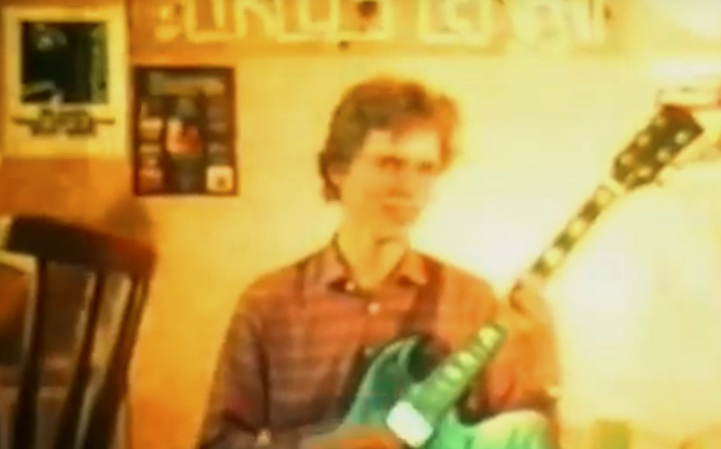
Dominik: I had no posters, no music magazines, but a big collection of Agatha Christie books, some comics, chess books, some records and dozens of MCs recorded from radio shows.
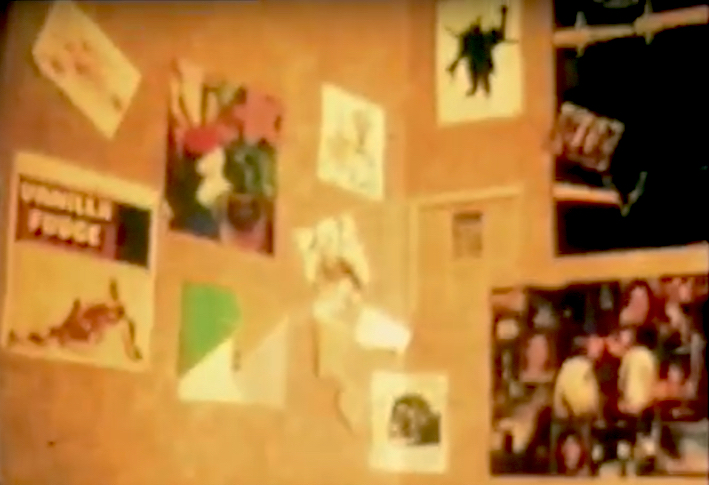
Was Cloud Nine & The Vitamin C your very first band or were you involved with any other bands?
Mike: Yes, Cloud Nine & The Vitamin C was actually my first band. When we got together, I was 16.
Dominik: Cloud Nine & The Vitamin C was my first band, too!
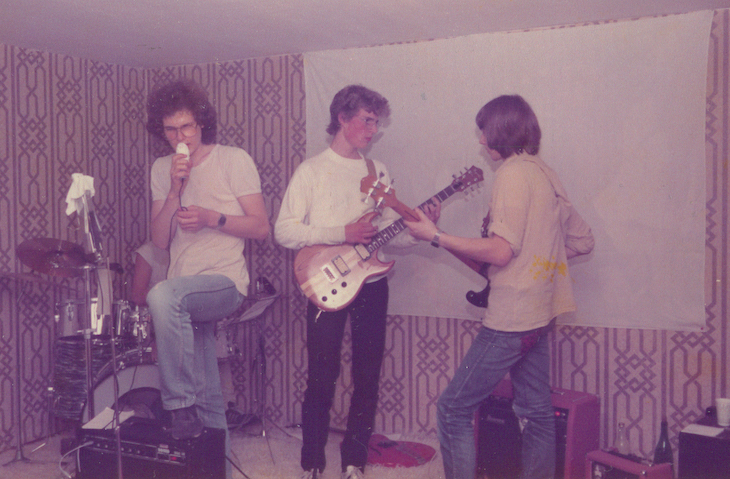
Can you elaborate on the formation of Cloud Nine & The Vitamin C?
Mike: The original idea to form a band to make the kind of music we liked, namely sixties psychedelic rock (which hardly anyone around us listened to at that time) and early seventies hard rock, came from Peter Schupp. At some point we found out that we both played guitar and liked the same or similar music. Like me, Peter was a big Doors fan and also liked early Pink Floyd. But he was also into heavier bands like Black Sabbath, The Who and Deep Purple, which I was fine with. We had also both read the Doors biography ‘No One Here Gets Out Alive’ by Hopkins/Sugarman, which had just been published in Germany at that time (in 1981), and were very interested – at least in theory – in psychedelics and their effects. Peter’s parents were both art teachers and in their home library there was also the excellent book ‘Psychedelic Art’ by Masters/Houston, which we both devoured and which encouraged us to make a psychedelic light show an integral part of the band’s performances … So there was enough to connect us, and so we got together, always on the lookout for new potential band members. A drummer was quickly found: Peter’s younger brother Jens Schupp, who had just started drum lessons. To be honest, he wasn’t really asked, but simply “ordered” to do it. But he didn’t put up much resistance either, as there weren’t many alternatives for him. The search for a singer proved to be more difficult. We tried out some of our interested classmates, but none of them could convince us. And then along came Dominik. Back in the winter of 1983, he not only had the best taste in music of all the applicants, but also really put his heart and soul into his singing. He also had certain basic musical skills that others didn’t have, as he played the piano and sang in the school choir. It wasn’t long before he decided not only to sing, but also to play keyboards. However, Peter encouraged me to sing as well, as my rather reserved, nasal voice simply seemed better suited to certain songs than Dominik’s loud and more aggressive voice, which was a little reminiscent of Ozzy Osbourne in places. Now we just had to find a new name. We had previously called ourselves Acidhead, after the first song that Peter and I wrote together, but that seemed a bit too, well, let’s say provocative for a band in the ‘Hessische Provinz’. If I remember correctly, Dominik suggested the new name – after the two corresponding titles by The Temptations and Can. It reminded one of those typical long, crazy sixties band names like Big Brother & The Holding Company or Country Joe & The Fish. And that seemed quite fitting. With this line-up (Peter, Mike, Jens, Dominik) we played together for about six and a half years – with a few interruptions.
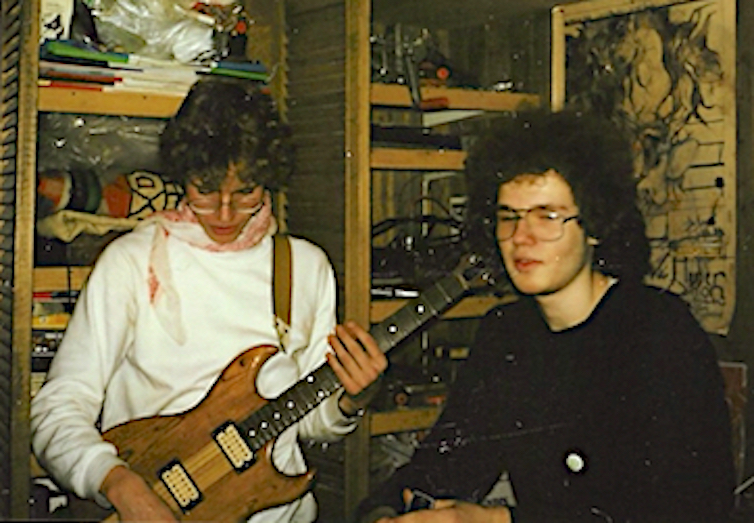
Dominik: I’m pretty sure, the name was my idea, and indeed I wanted something extraordinary like many of those 60s Westcoats Groups I knew already (BB&HC, CJ&F, QMS), something that sounded in a way druggy, but no too much.
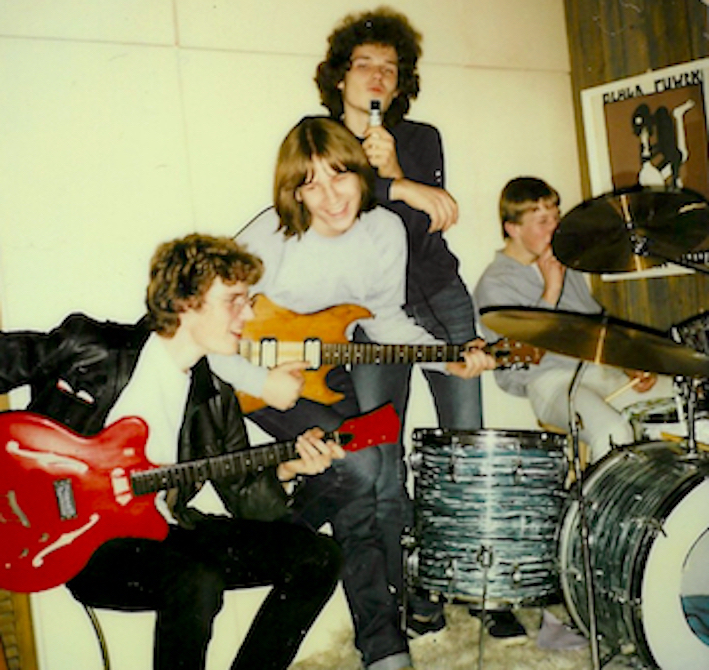
What influenced Cloud Nine & The Vitamin C’s sound?
Mike: I’ve already mentioned many of the influences above – first and foremost the sixties psychedelic and the hard rock bands of the early seventies. We also had the ambition from the beginning to do our thing without compromise, regardless of what others thought. We were well aware that we were the only ones doing what we were doing. And from the beginning we were interested in making the live concerts a multi-media event, with Super 8 films and psychedelic slide projections, just as we imagined it must have been in 1967 at the UFO Club in London, the Avalon Ballroom in San Francisco or at Andy Warhol’s Exploding Plastic Inevitable shows in New York. This whole mixed-media and Happening idea was an important aspect. Interestingly, there were no big discussions about how our music should sound. Each of us simply started writing songs, alone or as a team. We also developed some songs from jams during rehearsals. We did play a few cover songs at first (things like ‘Paranoid,’ ‘Gloria,’ ‘Soul Desert,’ ‘Sunshine of Your Love,’ ‘Locomotive Breath,’ the last one as an instrumental, and even ‘Smoke on the Water’), but it was important to us to write our own songs as quickly as possible and play them live.
Dominik: I guess, most influential to the music I tried to do myself were The Doors, but I managed to incorporate funky (bass) lines (‘Tracks of my Tears,’ which is not a cover), harmony vocals and a slight progressive touch to some small amount.
“We usually got commitments from youth centers…”
What kind of places did you play? What are some of the bands you shared stages with?
Mike: We started out as a school band, so we had a few gigs in the school auditorium. We were even allowed to play three songs at the official graduation ceremony in 1986. It wasn’t easy for a psychedelic rock band in the Rhine-Main area to get gigs in the 1980s. In general, there weren’t (any longer) many opportunities for live bands to perform in the region at that time, so we played wherever we could – even if it was for free. We usually got commitments from youth centers, played at some kind of local Peace Festival, at a University Art Festival in Heidelberg and also at a few other festivals, but also in small underground clubs like the Eledil in Darmstadt.
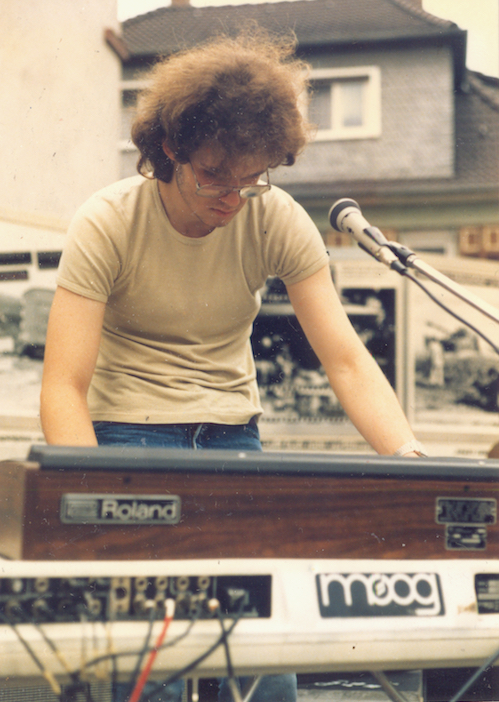
There weren’t really any well-known bands that played with us, only regional ones like A5 or the aforementioned Starfucker or Waste The Taste. (The somewhat better known Dschinn Fizz played once at the same festival as us, but on the next day). Once or twice we had a singer-songwriter with an acoustic guitar as a support act, but usually we played without a support band, because our concerts were relatively long, sometimes two hours or longer, as we often had songs with improvisational parts in the program.
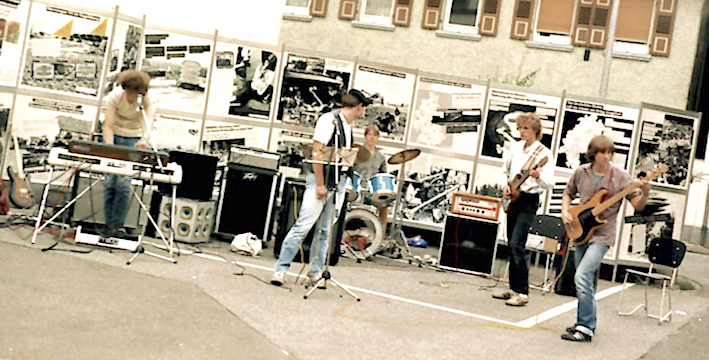
How did you begin working on your now released album? What’s the story behind it? Where did you record it? What kind of equipment did you use and who was the producer? How many hours did you spend in the studio?
Mike: In the summer of 1991, Pete Hergo joined CNVC (Cloud Nine & The Vitamin C’s) as the new guitarist. That was the sixth and last line-up. (Funnily enough, I had first met Pete at a record fair and sold him the first Mad River LP, which I had twice. When he came to our house to audition in response to a newspaper advertisement, we recognized each other immediately). Peter Schupp had left the band in 1989 (as had his brother) and in the meantime Andy Schulz (guitar) and Peter Gündling (drums) had played with us, but both had left again after about a year. (Those two guys can be heard on ‘Black Queen’ on the LP, which, unlike the other tracks, was recorded as a demo back in 1990). With the arrival of Pete Hergo a new, albeit unfortunately very short, era started for the band. He was undoubtedly the best guitarist we had ever played with and he brought a number of interesting songs with him. He also had a very good singing voice and a strong stage presence, which you couldn’t exactly say about the rest of us. And above all, he was highly motivated and immediately showed full commitment. The rehearsals went really well. He liked our old songs and it was easy for Pete to give them a new – and much better – guitar arrangement. His own songs sounded far less like sixties psychedelic rock than ours and were more influenced by some of the contemporary eighties bands of the time (such as The Feelies, The Charlatans, Julian Cope or Green On Red), but they still had something psychedelic about them, which suited CNVC well. Both Dominik and I were going through a very creative phase at the time and had written some pretty good new songs, so we soon had an interesting live program together. In the meantime, a certain Chris, whose surname nobody seems to remember, had been brought in by Pete to play drums. This Chris turned out to be very uncomplicated – and very competent. No question: Cloud Nine had never sounded as professional as they did now. Then Pete came up with the idea of making professional recordings in a proper studio; he knew two guys who owned a studio. They would give us a special price. We didn’t think twice and agreed. The studio in question was in Bickenbach, near Darmstadt, less than two kilometers from where Nektar had lived twenty years before. If I remember correctly, it was equipped with a 16-track tape machine; but that was all so long ago, it could have just been an 8-track machine. I’m not quite sure about that. We only had two, at most three days to record everything, as we didn’t have the money for more studio days.
So we recorded the backing tracks virtually live. All the songs on the LP are first or at most second takes. Which shows how well-rehearsed the band was at the time. We didn’t have a great plan of what exactly we wanted to record and how, so we just started recording as much as we could. As I wrote in the liner notes of the LP, two of us unfortunately got into an argument during the recordings, which meant that the recording sessions were aborted on the second day. The following day there were only a few guitar overdubs done and a few days later the end result presented to us was a kind of rough mix that was hardly usable. In any case, a record release was out of the question. And what for? Cloud Nine had disbanded after a very last gig at the Eledil Club in Darmstadt on February 22, 1992. Just a few days after the recording sessions: The backing tracks were recorded on the 17th and 18th of February 1992, the guitar overdubs and the creation of a rough mix (presumably) were done on the 19th of February. The sound engineer was a guy by the name of Jan Backes, assisted by a buddy whose name I can’t remember. The recordings in Bickenbach were never really finished, let alone properly mixed. No one had the power at the time to care about the completion of the project, and so time passed and nothing happened. Years later, I tried to find the original tapes to remix them, only to find out that they had been lost. Jan, the sound engineer, told me he remembered that they were damaged and that he had thrown them away. But I did not give up. I chose the best versions of the tape copies and started remixing the songs. There were some drop-outs on the old tapes that had to be cut out, and here and there a little bit was recut and shortened. I also added some wind sound in some places to drown out the tape noise. But there was one major problem that couldn’t be fixed that way: Dominik’s vocals on ‘Empty and Cold’ were simply recorded far too irregularly, too quiet in some places, too loud in others, and the keyboard was completely distorted in the last part of the song and had to be cut out. It was no use, the vocals had to be corrected, and after much toing and froing, Dominik was finally persuaded to re-record the vocal track in 2022 (a big thank you! to Alex Schilz who sat in as sound engineer in his studio) so that the original poorly recorded vocals could be overdubbed. Apart from that, nothing was re-recorded. The final touches were added by the remastering of a very friendly sound engineer called Alain Paul. (A big thank you to Louis Gee for this contact!).
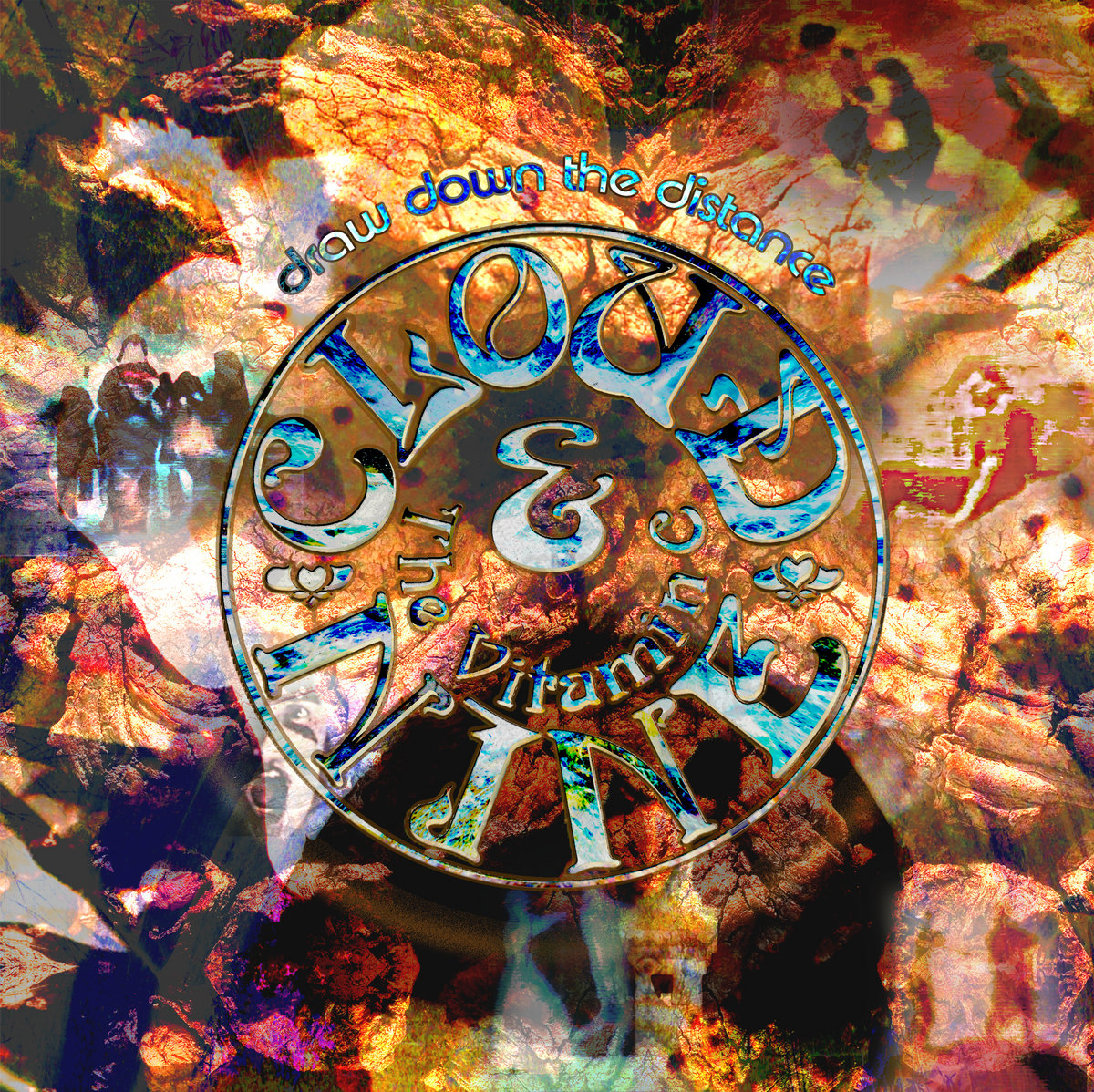
Would love it if you could provide insight on the album’s tracks?
Mike: ‘Draw Down The Distance’: The title track of the LP and one of the songs I’m really proud of to have written. The song is specifically about a woman I was with at the time, and I had the impression that I couldn’t really get through to her. Generally speaking, it’s about counteracting the feeling of alienation – perhaps also through a certain expansion of consciousness … And it’s about the realization that the experience of closeness in a relationship can also have something to do with liberation or personal freedom, as contradictory as that may sound. As for the music: first there was the bass riff, then came the lyrics. And it was clear to me that the middle section should contain a wild climax and a catharsis part before the last verse. At first, the middle section was wildly improvised during live performances, but over time certain licks emerged that we kept and improved, and at some point it was more or less arranged. Live, the song could last almost 20 minutes and it was certainly the highlight of many concerts. It was also great fun to play live because you never knew where the journey would take you in the middle section. At some point, Dominik wrote the introduction on the keyboard and we recorded ‘Draw Down’ live in the studio with this arrangement.
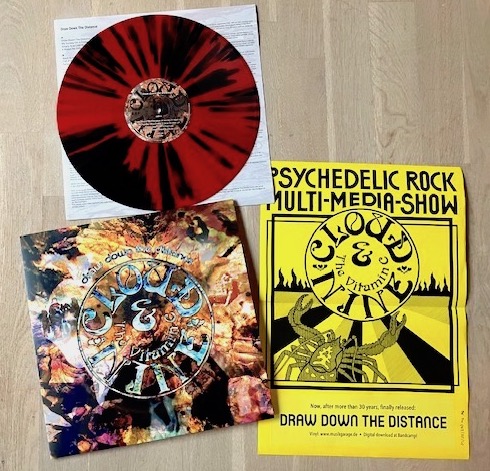
‘My Sunday On A Friday’: Pete brought this song to the rehearsals ready to go. The lyrics, which are very dark, or at least parts of them, were written by a friend of his. I can’t say much more about it, except that I think it’s a great song. ‘My Sunday’ has quite a lot of groove by Cloud Nine standards and has always reminded me a bit of The Charlatans (the UK band), although it’s much darker than their stuff.
‘Empty and Cold’: One of Dominik’s best songs, relatively rock style verses and live again one of the songs where we played a longer improvised take-off part in the middle. Here in the studio version, I had to cut out a lot of the spacey middle section (the sound engineer perhaps overdid it a little with the echo anyway … but hey, that’s what makes it even more psychedelic) because the tape was unfortunately badly damaged, but I think you can hardly hear the cut. I also had to remove most of the ending of the song: a long keyboard break was cut out because the organ was completely distorted. On the LP, the ending now comes across as very much in a punk style. Which isn’t a bad thing. Apart from that, the main riff always reminded me of Quicksilver or Bo Diddley. As mentioned above, Dominik completely re-recorded the vocals, but the old ones still bleed through in places.
‘It Makes No Difference’: The lyrics are about the trials and tribulations in our lives, the injuries we inflict on ourselves in some relationships and the feeling of abandonment. And yet you try not to let it get you down. Incidentally, the first line of the lyrics was inspired by Douglas Adams (‘Dirk Gently’s Holistic Detective Agency’). Originally the song was much longer, had a lot more verses and a slower tempo. I think it was Pete who suggested playing it faster and harder. Which was a brilliant idea. At the time I wrote the song, I had just discovered The Cure (especially ‘Disintegration’ and ‘Seventeen Seconds’), and you can kind of hear that, I think.
‘Black Queen’: We’ve had this song in our program for a very long time, even in the Peter Schupp days, and it was often one of the highlights of the early concerts in particular. Once again, it’s about a girl who the singer has a crush on, but who seems unattainable for him. Okay, not very profound, but those were some of the first lyrics I ever wrote. That must have been in late 1985, I guess. Once again, the relatively simple bass riff came first, then the lyrics (in fact, I wrote them during a school lesson, and the girl they were about was sitting just a little away from me, ignoring me. No happy ending!). While rehearsing the song, Dominik came up with the brilliant keyboard run and piece by piece we worked out the middle section. His keyboard playing is really outstanding here and shows a certain classical influence on the one hand, but also has a strong Doors sound on the other. Strangely enough, we didn’t record ‘Black Queen’ at the Bickenbach recording session, even though it was an integral part of the live program at the time and we all still liked it. We probably would have recorded it if we hadn’t broken off the session on the second day. Well, too bad, I really would have loved to hear Pete play the guitar on it.
‘Call’: Hmmm, this song is really strange, probably the strangest one off the whole record, which is because so many people worked on it. The original basic idea for both the lyrics and the music came from our former drummer Peter Gündling (who even can’t be heard on the track; on the LP he only drums on ‘Black Queen’). Somehow we liked the song, but the arrangement and the lyrics left a lot to be desired. So we made the song a bit faster and more aggressive, and Pete and I rewrote the lyrics together. What are they about? It’s hard to say. About a somewhat dysfunctional relationship, I guess, but maybe it’s not a bad thing if every listener can make up his own mind about the lyrics’ meaning.
‘Sunspots’: The first part, which always reminds me of the beginning of ‘Dark Star’ by the Grateful Dead, was completely improvised live in the studio. Pete had the spontaneous idea of playing a sitar and our lightshow man Christof contributed the flute. The second, arranged folky part, was written by Pete (and is a little too long for my taste, but what the heck). A nice, relaxed end to a versatile album. Here I had to combine two tape versions when mixing, as one version had a drop-out in the first part and the other in the second. The problem was that the tape speed was slightly different, which was particularly noticeable on the organ sound. That was the real reason why I added the thunder at the transition point. This creates a very nice effect and now you can no longer hear that the two parts are slightly different in pitch.
Were you inspired by psychoactive substances like LSD at the time of writing the album?
Mike: A somewhat tricky question. On the other hand, this all happened over thirty years ago. Let’s put it this way: some people who were involved in the recordings definitely had experience with psychoactive substances, some members of the band were completely inexperienced in this or rejected such substances on principle. Anyway, I don’t want to mention any names in this context and can only speak for myself. At that time, I already had some experience of consciousness expansion, both with and without certain substances (e. g. I had had some sessions with holotropic breathing/rebirthing). Among other things, I had taken part in a psychedelic group session with a Swiss psychologist in which LSD and MDMA were given to the participants. That was a very special experience that helped shape my world view and certainly also my understanding of music …
Dominik: Me not at all, even though I was into psychedelic music (starting with the psychedelic Soul of The Temptations) from the age of about twelve, I guess. I never did drugs, apart from alcohol and music.
What would be the craziest gig you ever did?
Mike: Probably our craziest gig was when we were playing in the foyer of a theater and people were streaming out after a “Tommy” show. We were completely ignored, people just walked past us and obviously just wanted to go home. Hmm, maybe we should have played ‘Pinball Wizard’ …
Dominik: Define Crazy?! There was a small Open Air in Mannheim, I remember, only a few seemingly homeless people came to see us. We did an endless soundcheck, hoping the music would attract people from the pubs nearby, but in the end we had to play for a very small bunch of drunks and finally didn’t get paid.
Mike: Oh yes, I remember that one! That was definitely a crazy gig. We played very heavy on that special occasion because it was so frustrating.
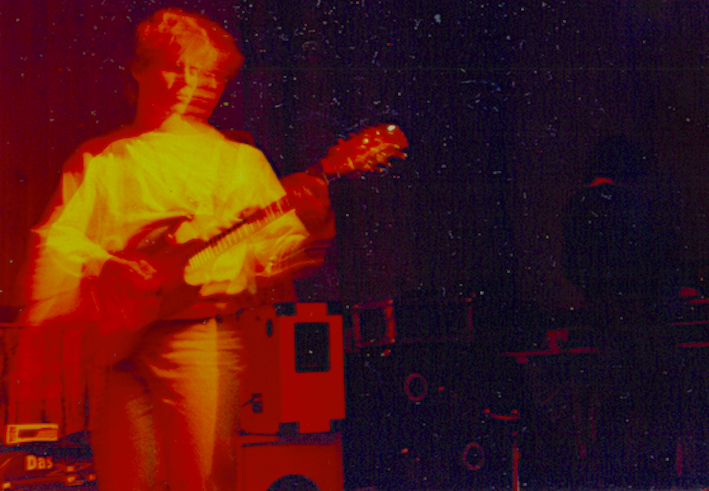
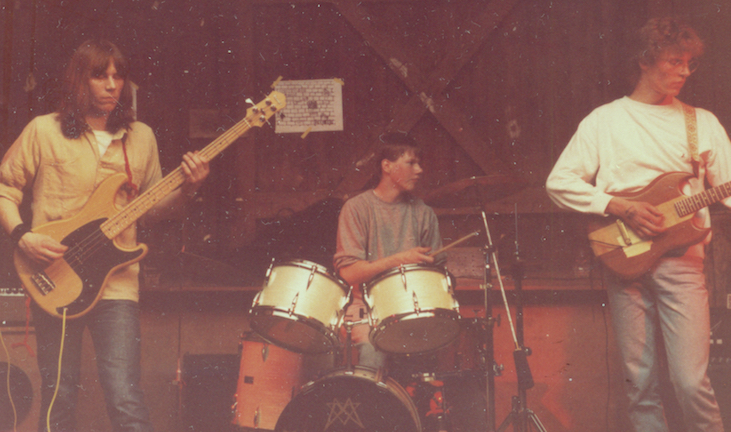
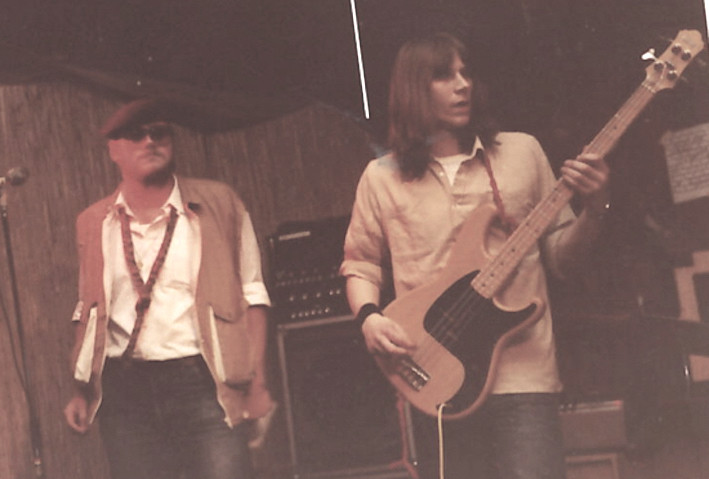
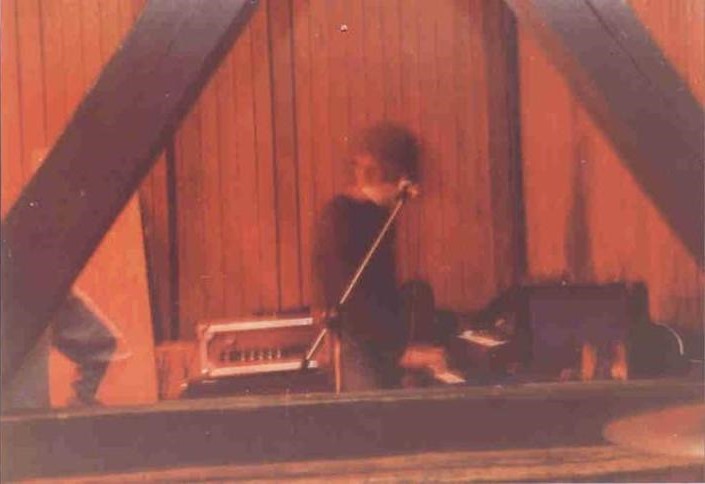
Was there a certain concept behind the album?
Mike: Not really. We simply took the opportunity to record the songs that we had rehearsed well for the live program at the time, so we could assume that we would have them on tape as quickly as possible. And that’s how it was. However, in retrospect it’s incomprehensible that we recorded a rather atypical song like ‘Call,’ but not ‘Black Queen’. And I would have liked to have recorded a few other songs in studio quality as well, especially ‘I’m Lost’ and ‘Angel of Mine’. However, I racked my brains for days about the track order on the LP. I soon realized that ‘Sunspots’ should be at the end. In hindsight, it might have been better to start with ‘My Sunday on A Friday,’ which is a bit more catchy, and only then add the long song ‘Draw Down’ with its chaotic middle section. Anyway, that’s the way it is now.
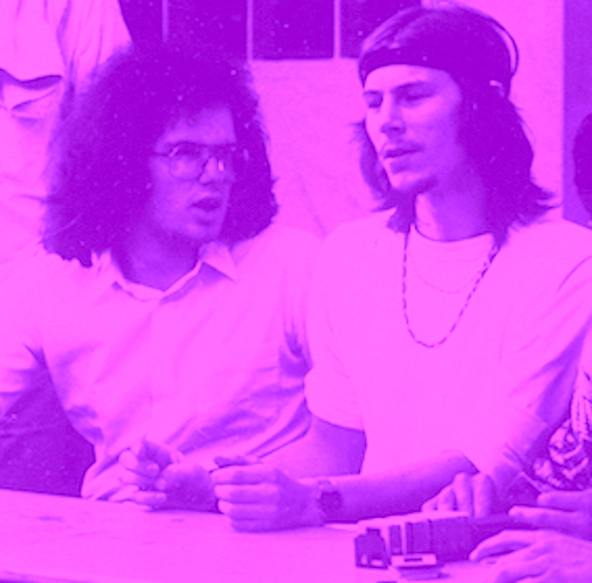
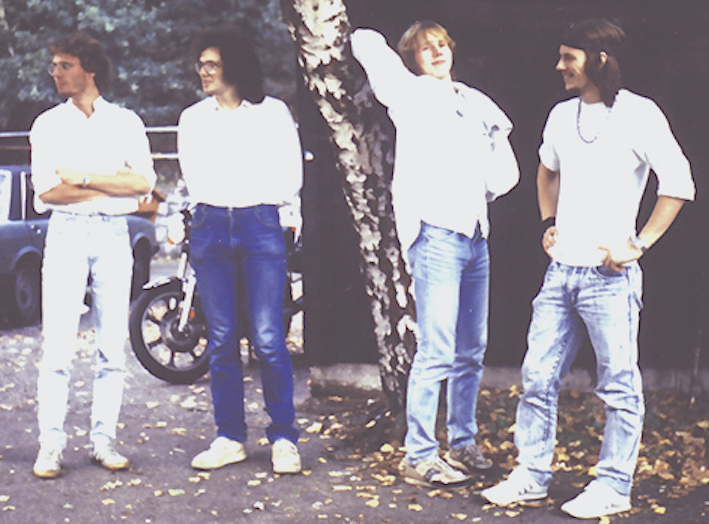
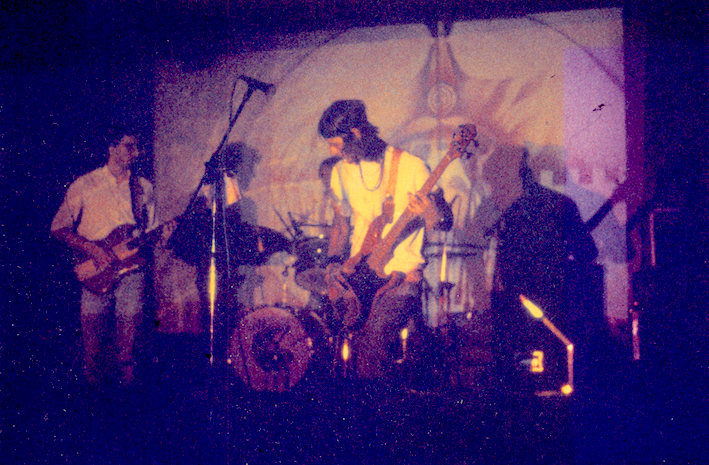
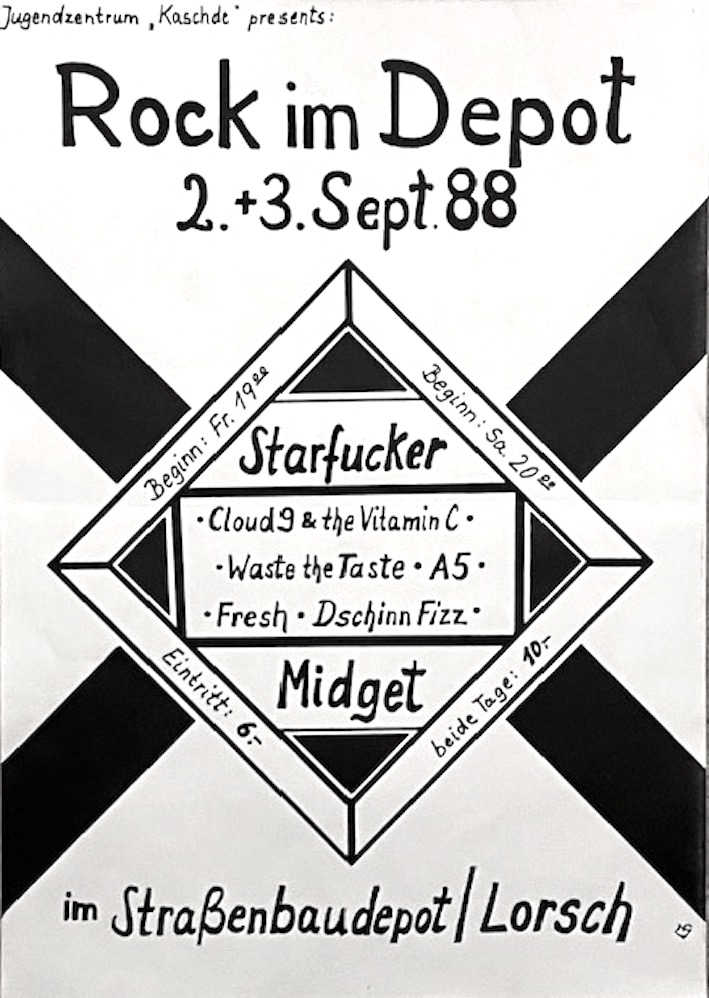
You originally released a series of tapes. Can you write down the discography and connect the dots?
Mike: We recorded almost all our concerts on tape and occasionally distributed copies to close friends. But the sound quality (and admittedly also the musical quality) of the very first concerts in particular was very often questionable.
In addition, there were also more or less some “official” tapes, which we either recorded for demo purposes or sold at concerts.
One after the other:
‘On The Way Up’ (B-CNVC-0004)(1985)
a) Side
‘Intro’ (= ‘Locomotive Breath,’ instrumental) 3:19
‘Annemarie’ 2:44
‘Brainstorm’ (not the Hawkwind song!) 7:09
‘Stoned’ 3:56
‘I Never Wanna Be Your Clown’ 3:31
b) Side; live (recorded at the “1. Lorscher Woodstöckchen” Festival, Lorsch, Straßenbaudepot 04. May 1985)
‘Jack o’Lantern’ 11:00
‘Survivor’ 5:59
‘Rainfrontier’ 5:08
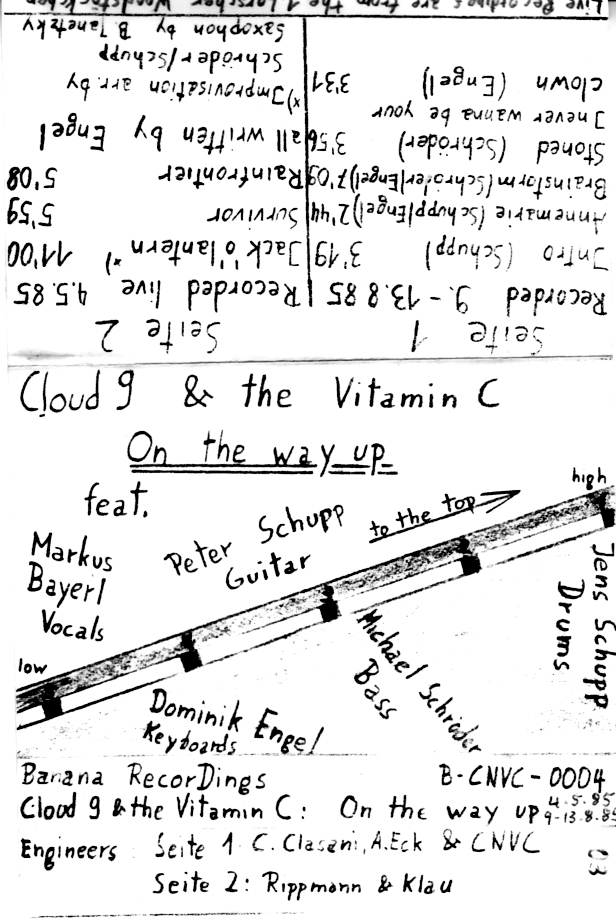
Unreleased Demo 1 (‘Latin Session’) (1988)
‘I’m Lost’ 5:00
‘Last Night’ 5:20
‘Black Queen’ 8:30
‘Car Car’ 3:12
Unreleased Demo 2 (1989)
‘Angel of Mine’ 5:45
‘Car Car’ 3:20
‘Annemarie’ 3:05
‘I’m Lost’ 4:45
‘Cloud 9 & The Vitamin C’ (B-CNVC-05)(1990)
a) Side
‘Black Queen’ 9:40
‘Survivor’ 7:30
b) Side
‘Rainfrontier’ 3:24
‘Angel of Mine’ 5:06
‘Last Night’ 4:48
‘Tracks of My Tears’ 4:17
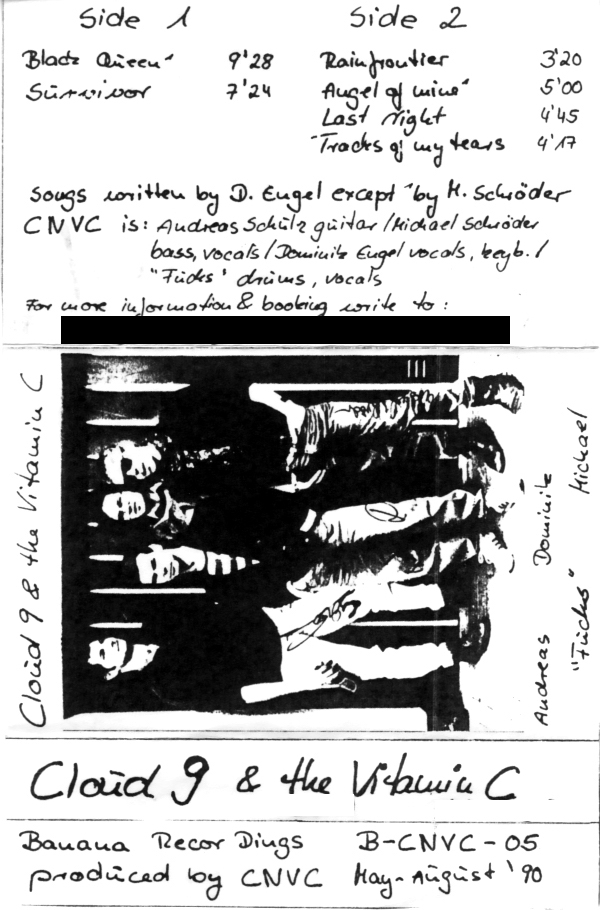
10″ EP ‘Rainfrontier’ (CNVC10)(rec. 1990/rel. 2023)
a) Side
‘Rainfrontier’ 2:39
‘Tracks of My Tears 4:23
‘Last Night’ 4:52
b) Side
‘Black Queen’ 9:25
(remastered songs from the 1990 demo above)
12″ LP ‘Draw Down the Distance’ (CNVC11)(rec. 1992*/rel. 2023)
a) Side
‘Draw Down the Distance’ 10:06
‘My Sunday On A Friday’ 3:27
‘Empty And Cold’ 5:59
‘It Makes No Difference’ 3:07
b) Side
‘Black Queen’* 9:25
‘Call’ 3:36
‘Sunspots’ 7:34
(*same version as on 10,” rec. 1990)
A rough mix version of the 1992 recordings was for some time available as ‘Cloud Nine: 1992’ as a free mp3 download on my blog Homemade-Lofi-Psych (HLFP).
There was also a small series on HLFP with selected concert recordings under the title ‘Cloud Nine – Evolution of a psychedelic band,’ which I have now withdrawn with the exception of the 6th part: ‘Official Bootleg Archives III: The Best of the Eledil Tapes 1991/92’.
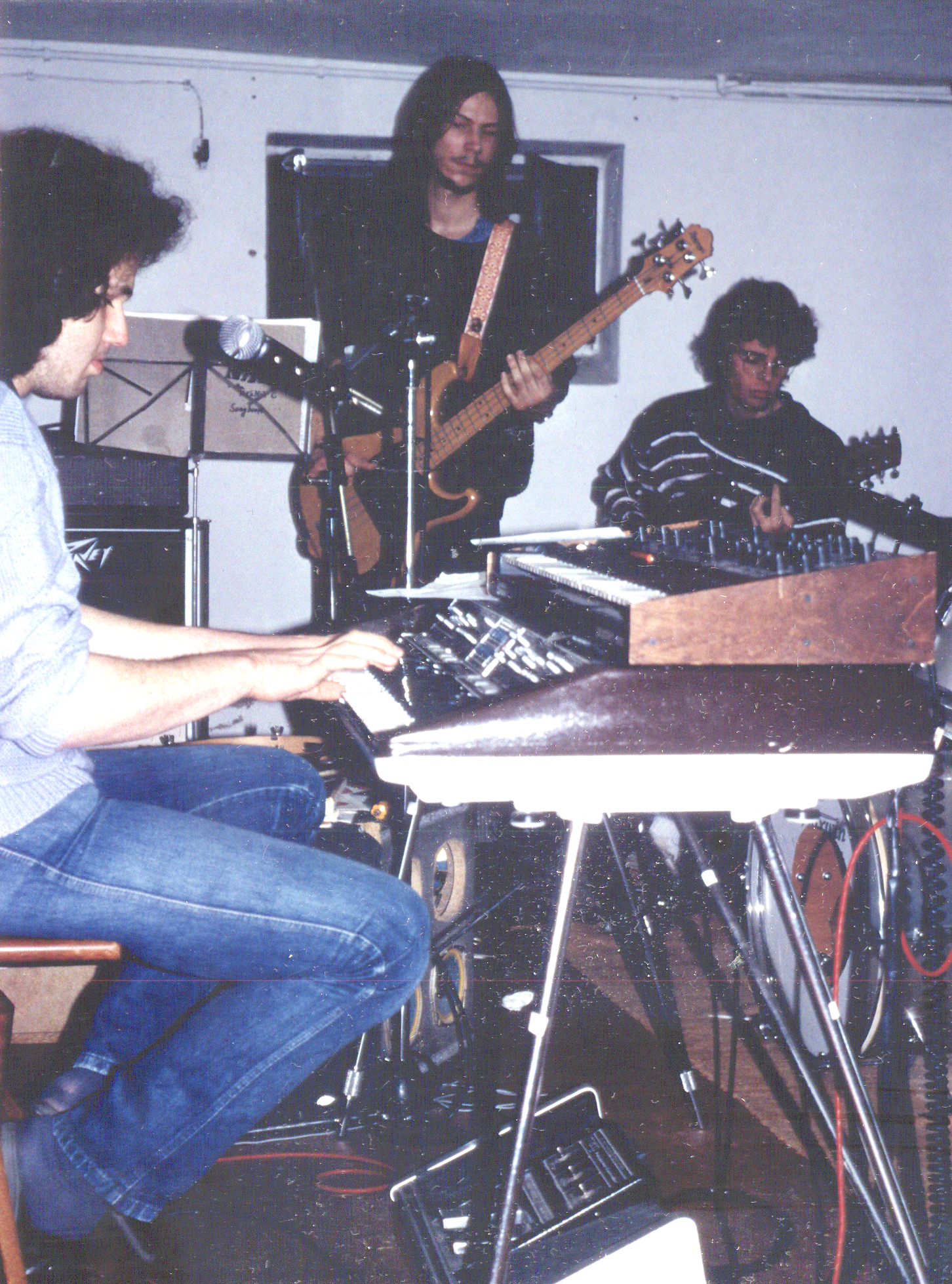
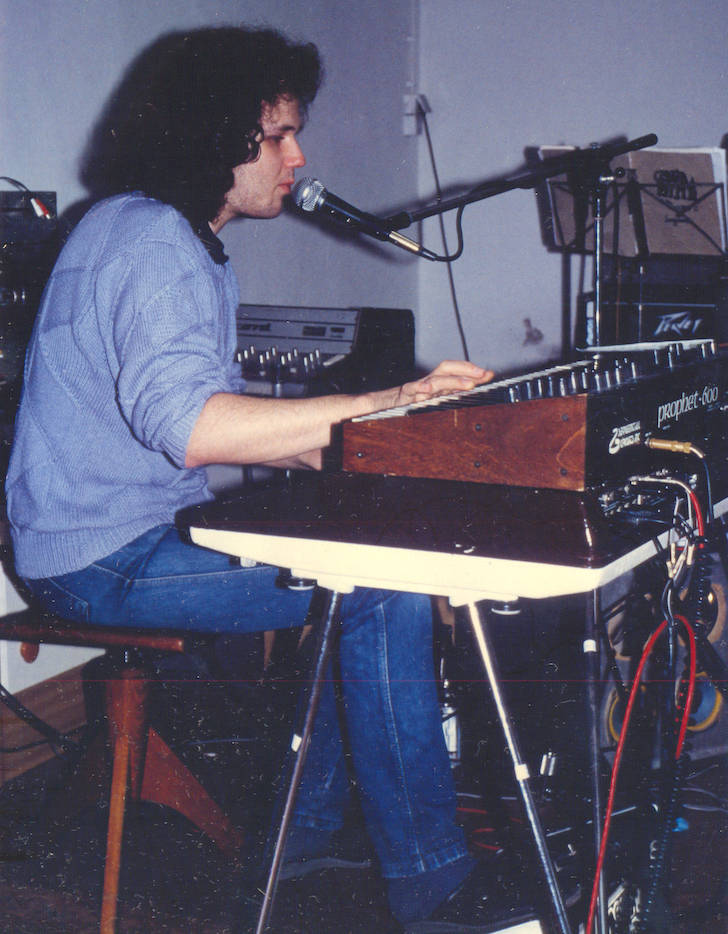
Tell us about the instruments, gear, effects et cetera you had in the band.
Mike: I played an Ibanez Roadstar 2 Bass over a Fender Bassman top and a Peavey Box. I used some effect pedals like a phaser and a fuzz box. Later, after CNVC, also a flanger and sometimes a wah wah pedal. I can’t say much about the equipment of the others, especially as there have been a lot of changes over the years.
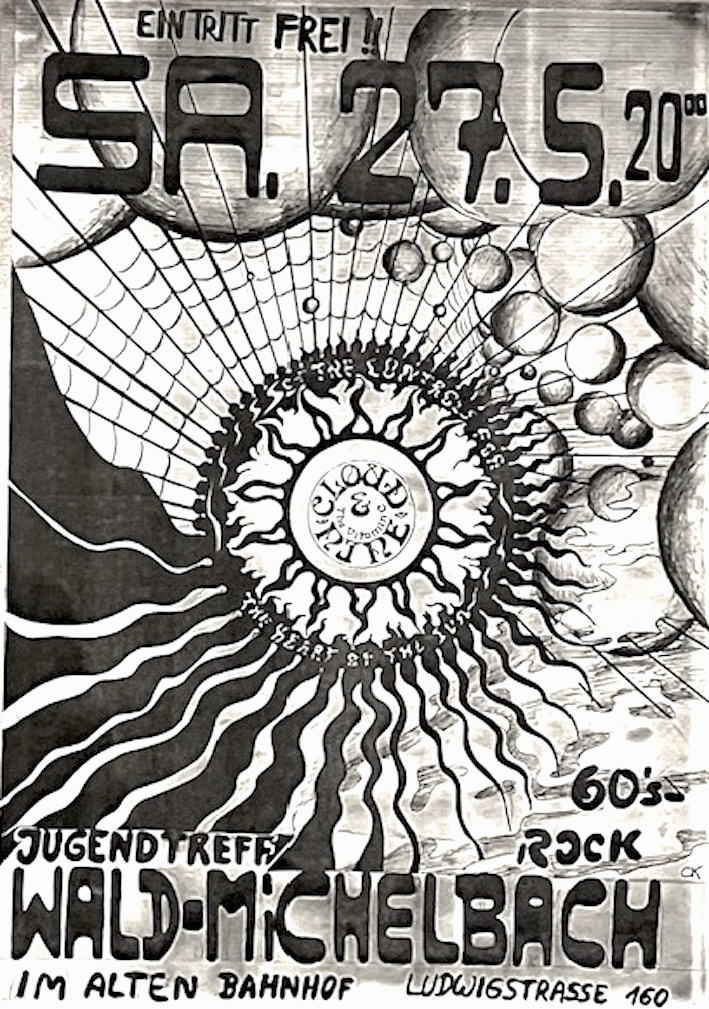
Dominik: Aside from some cheap synthesizers I had a Mini-Moog for many years and a Polymoog for some time. Both were not in perfect condition and I never really found a way to incorporate real weird sounds into our music. But I loved trashy organ sounds like for example the organ solo in Orchestral Manoeuvres in the Dark’s ‘Sailing on the Seven Seas’.



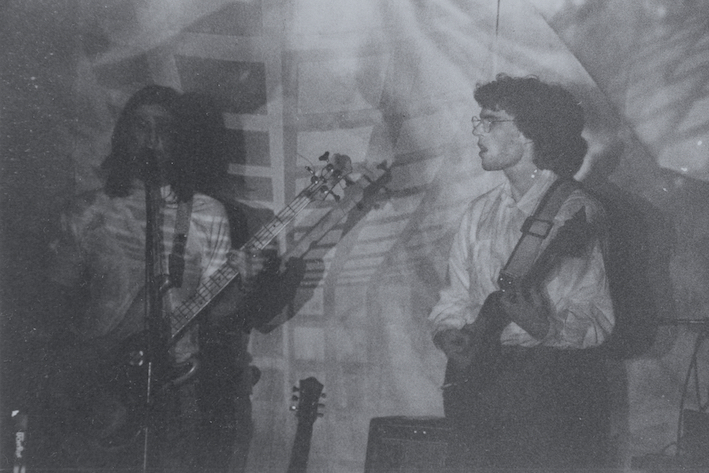



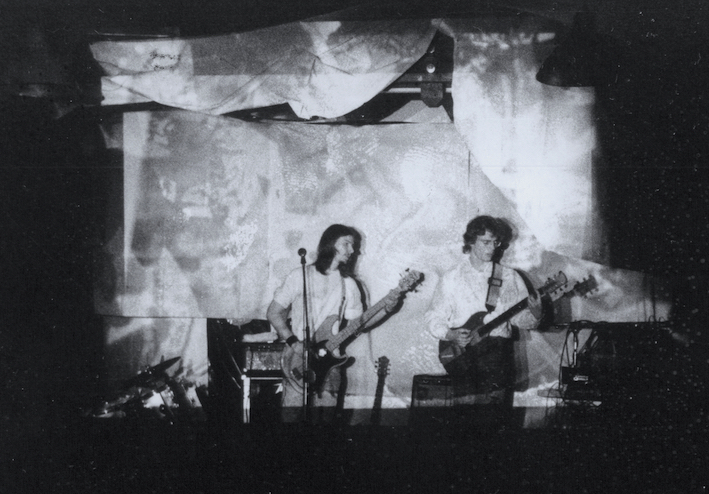
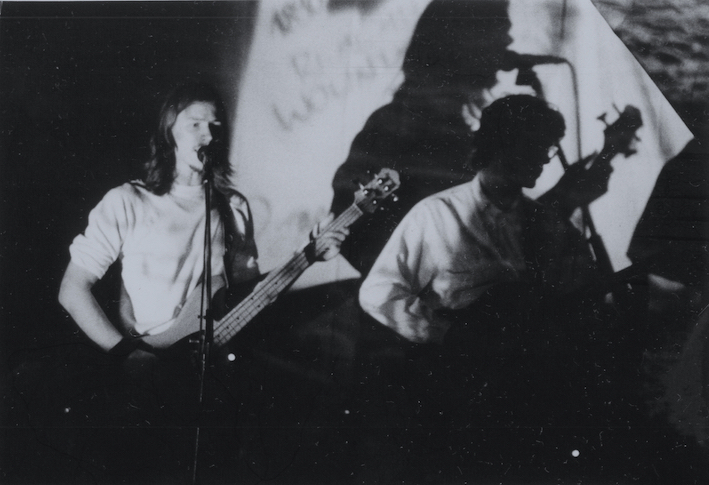






I always think of CNVC when that song comes on the radio, honestly! And so those cheap synthesizers did it for me at the time and you may recognise the moog on some tracks of our EP (CNVC 10). After CNVC disbanded I never played keyboards in another band and sold them through the years.
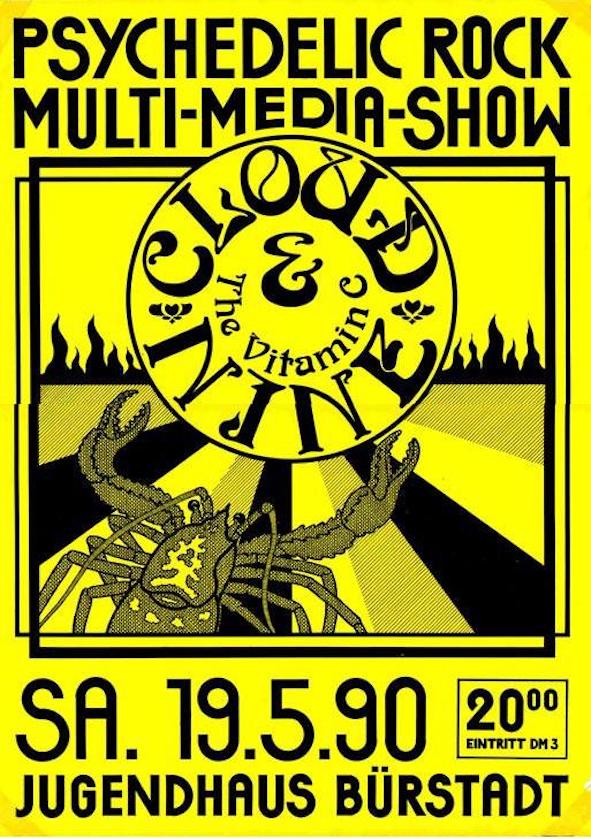
What happened to Cloud Nine & The Vitamin C? For how long did you stay together?
The band existed in a total of six different incarnations from the end of 1983 to February 1992, with the core always consisting of Dominik and myself.
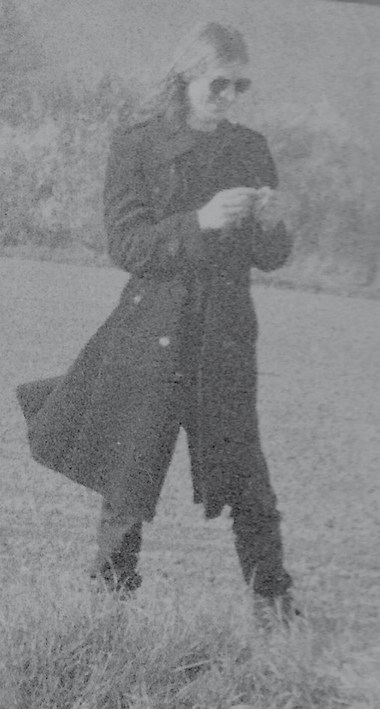
What other projects / bands did members of Cloud Nine & The Vitamin C have later on?
Mike: Unfortunately, I know very little about what the others were doing because we lost track of each other for a long time. I never heard from Andy, the guitarist who played on the ‘Rainfrontier’ EP and on ‘Black Queen’ on the LP, after he left the band. Maybe he’ll read this and get in touch with us? Hi, Andy! None of us had any contact with Chris, the drummer on the LP, after that either. After Cloud Nine disbanded, Pete and I made a half-hearted attempt to set up a follow-up project under the name Sister Luna, with a chaotic keyboard player nicknamed Pipi and a certain Denner (Daniel Sich) on drums, but it wasn’t meant to be. I was now living in Mainz and the others were from Darmstadt and Frankfurt, so it was simply very difficult to organize rehearsals.
I then recorded several solo projects under the name Anyone’s Dreamcolour, which were only released as free downloads on HLFP many years later. Specifically, these were: ‘Acid Daze’ (1992), ‘Opel Opera: Dadaistische Oper in 3 Akten’ (1994) and ‘It’s So Cold Out Here in Space/FM Bunker’ (1995/96), all released on HLFP in 2008. In addition, the above-mentioned drummer Denner, who had also drummed with CNVC (he was formerly with Thotes Schwein, Captain Fartfish and his Careful Muffins and many others), founded Orange with his then girlfriend Suse Gareis and guitarist Michael Schmidt (formerly The Janitors of Lunacy), which I joined as a bass player. Orange in this line-up existed from 1993-1996 and played a kind of psychedelic grunge music. We played around forty gigs or more in Frankfurt and the surrounding area in those three years, played at many festivals (including once as the support act for Guru Guru) and released two demo tapes in small quantities (around 50, I guess), which were also sold at concerts: ‘Orange’ (1993) and ‘In The Garden of the Demon King’ (1995). At the same time, I played for a few years in the blues/hard rock band Mad Magic with Hans Frommer (guitar, vocals, formerly The Stags) and a drummer with the first name Dieter (sorry, I can’t remember the surname at the moment). Our program included songs by Hendrix, The Rolling Stones, The Yardbirds, The Kinks and so on, but we also played many of Hans’ own songs in the style of The Rolling Stones or The Doobie Brothers. After Orange and Mad Magic came to an end, I lost interest in making music myself and concentrated on other things.
In 2008, I started the blog Homemade Lofi Psych, which still exists, but is currently more or less in limbo because I don’t have enough time to post much new stuff.
Dominik: Cloud Nine & the Vitamin C was my first band, in the late 80s I already rehearsed with some guys from my brother’s punk band and we did some punk with organ covering The Outsiders’ Killer ‘Time Won’t Let Me’ and Shocking Blue’s ‘Venus’ with the verses slowed down in Vanilla Fudge style and the refrains punked up. After CNVC broke up I started my record shop, when some guy came in and asked if he could place an ad searching for a singer in a rock band. I got the “Job” with some band called Nevertheless. We did a mixture of Covers – ‘Under The Bridge’ (Red Hot Chili Peppers) and ‘Desire’ (U2) – and I brought along ‘Rainfrontier’. We had a handful of gigs but I never had the feeling we were a team like CNVC. Later I rehearsed with some cover bands for half a year. I do not even remember the name, and after singing in a local pop choir for a few years, soloing on George Michael’s ‘Freedom! ’90’ I called it quits.
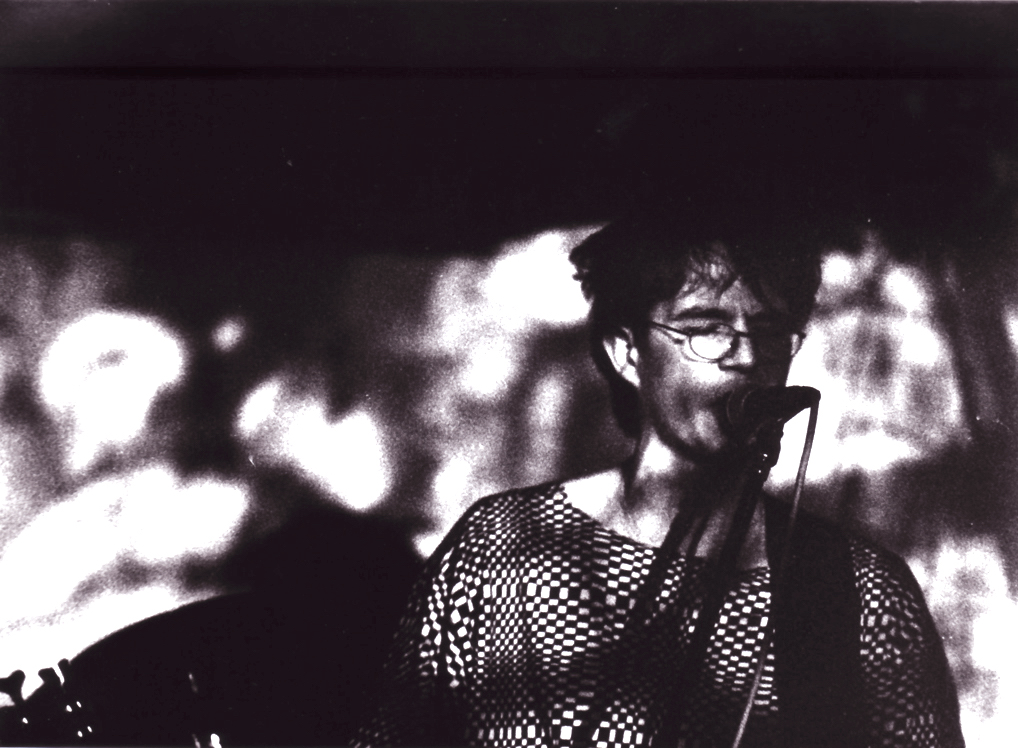
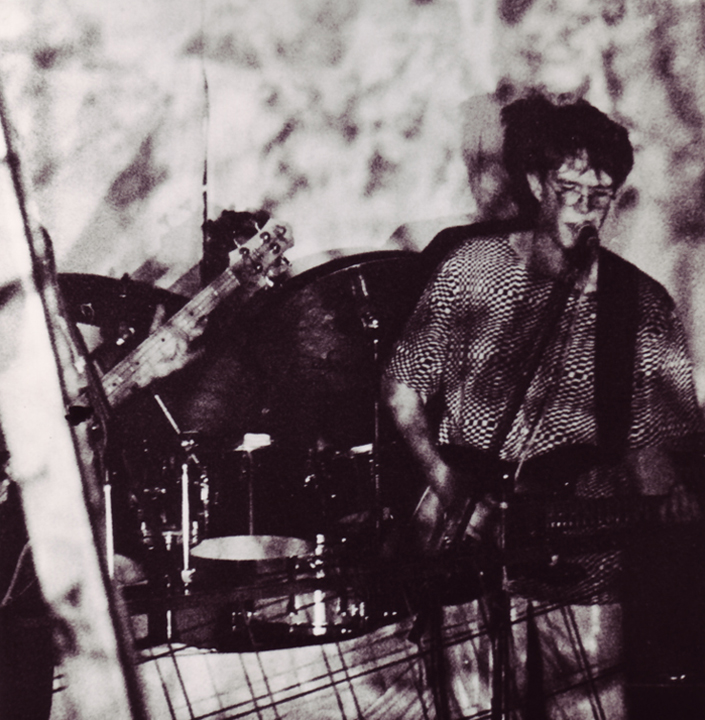
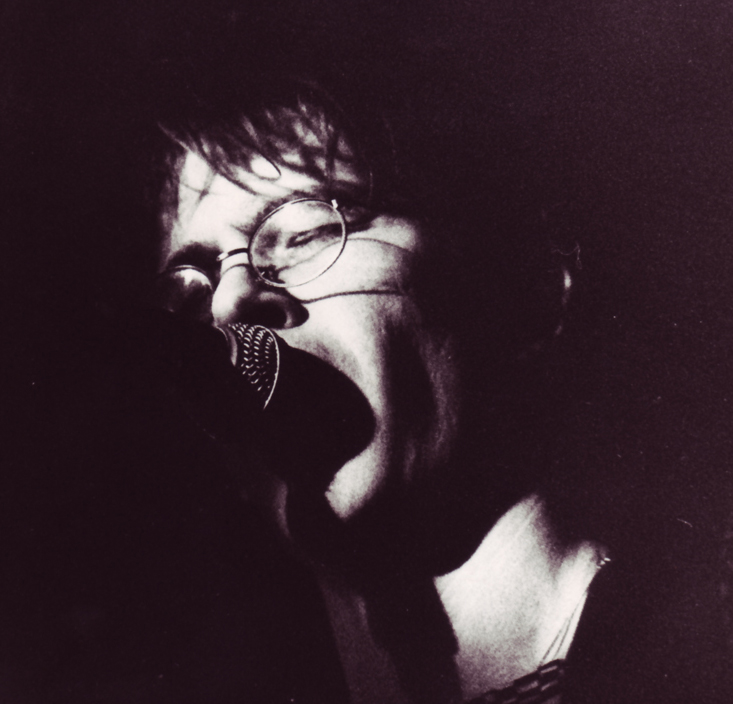
Looking back, what was the highlight of your time in the band? Which songs are you most proud of? Where and when was your most memorable gig?
Mike: There were a few really great gigs that I still remember. For example, at the Teestube Oase youth center in Heppenheim in January 1989, which was probably the concert where we had the best psychedelic light show ever. It simply went perfectly with our performance. We tried out a lot that evening, played numerous new pieces and improvised a lot, and you could feel how the audience was amazed, even enchanted. The press response afterwards was also fantastic. It was the first time I had the impression that things were really going well with the band. The last two concerts at Eledil in Darmstadt were also a highlight. The band sounded better than ever before, even though we broke up shortly afterwards due to internal disputes. What a shame! And of course the recording sessions for the album were also something special, even if the end was unfortunate. So it’s really great that we’ve managed to release the record after all – after “a bit” of a delay. The songs I’m most proud of are, without question ‘Draw Down The Distance’ and ‘Black Queen,’ but also ‘It Makes No Difference’. However, I wrote some of my best songs shortly after Cloud Nine broke up, including ‘Magic Spell’ and ‘Sleep My Love’, which I then played with Orange.
Dominik: Each show (apart from maybe the one in Mannheim) was a highlight as we were progressing all the time. And of course releasing a vinyl record after all those years is some kind of climax! I still think ‘Black Queen’ was our best song. It is of course Mike’s song, but I received credits, for I contributed those keyboard lines and a big portion of the arrangement ideas. Of my own compositions I still like ‘Rainfrontier’, my personal ‘Liar Liar’ or ‘Candy-O’. In its original version it was a two and half minute guitar rocker with some very trivial lyrics written while riding home on my bike and coming from the sunshine into the rain. If I remember correctly it’s the one song we played from almost the start until the end. The 90s’ version on the EP is with keyboards, resembling our sound at that time. And I’m amazed how much I still identify with ‘Empty and Cold,’ and I wish the vocals would have been better produced at the time.
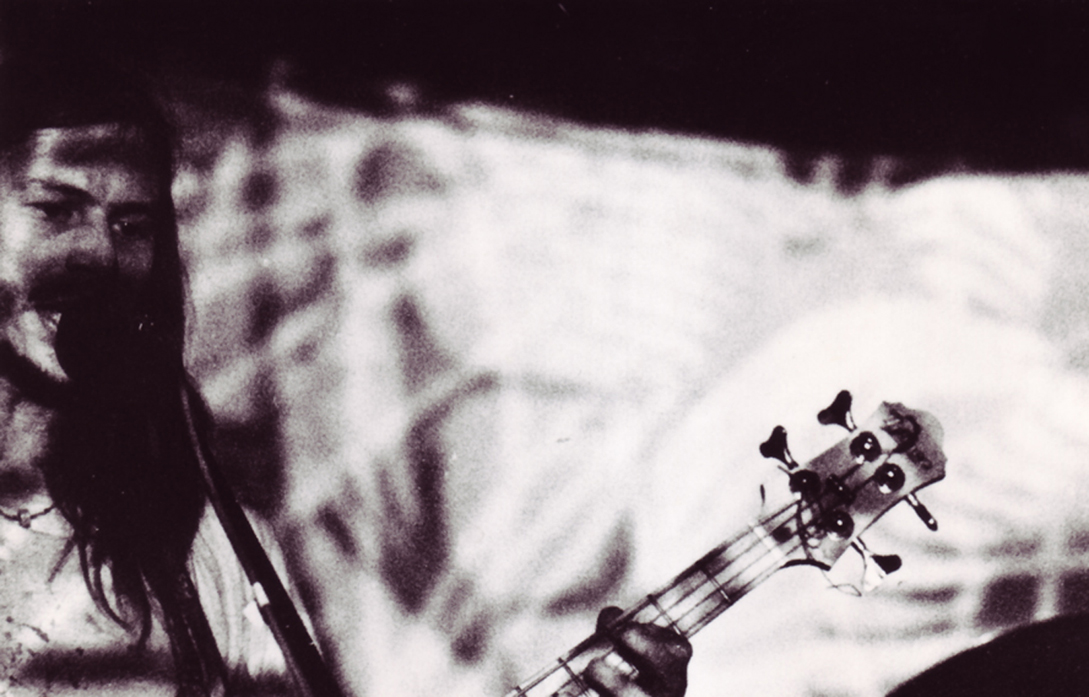
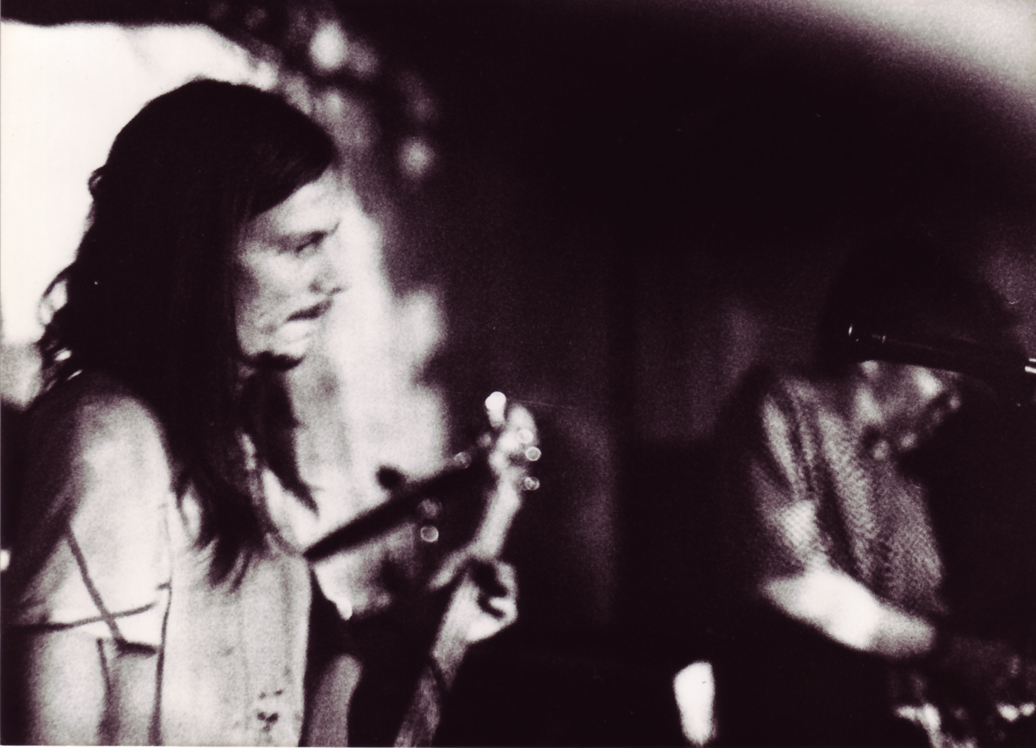
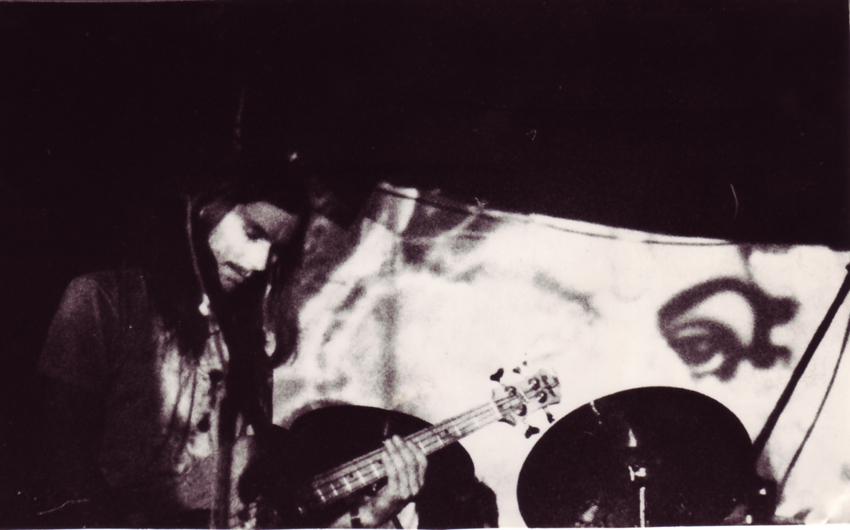
Thank you for taking your time. Last word is yours.
Mike: For a long time I didn’t think it would be possible that a Cloud Nine & The Vitamin C record would ever see the light of day. And now the time has come – and that is really great. We can’t thank you enough, Klemen, for running this outstanding website and especially for paying any attention to our little, comparatively insignificant band and for featuring us and our record. Thank you so much!
Dominik: When we did those recordings in 1992 my life was at quite a handful of crossroads, personally and professionally, stressing me and when it came to that argument with Pete, I was not able to cope with it, so I simply threw the towel on CNVC. The more I’m happy now that I initiated getting those records out finally. And I really want to thank Mike for the great job he did in editing those tracks, I didn’t expect the records to sound that good in the end. We already received quite a lot of positive feedback (and not only from our friends!) and it’s a great honor, that people like you, Klemen, show interest in our music, too.
Klemen Breznikar
Headline photo: Promo photo of Cloud Nine & The Vitamin C used for the cover of the second demo from 1989. This line up recorded the 10″ EP ‘Rainfrontier’ in 1990 | Andy Schulz, Peter Gündling, Dominik Engel, Mike Floyd
Cloud Nine & The Vitamin C Official Website / Facebook / Bandcamp / YouTube

